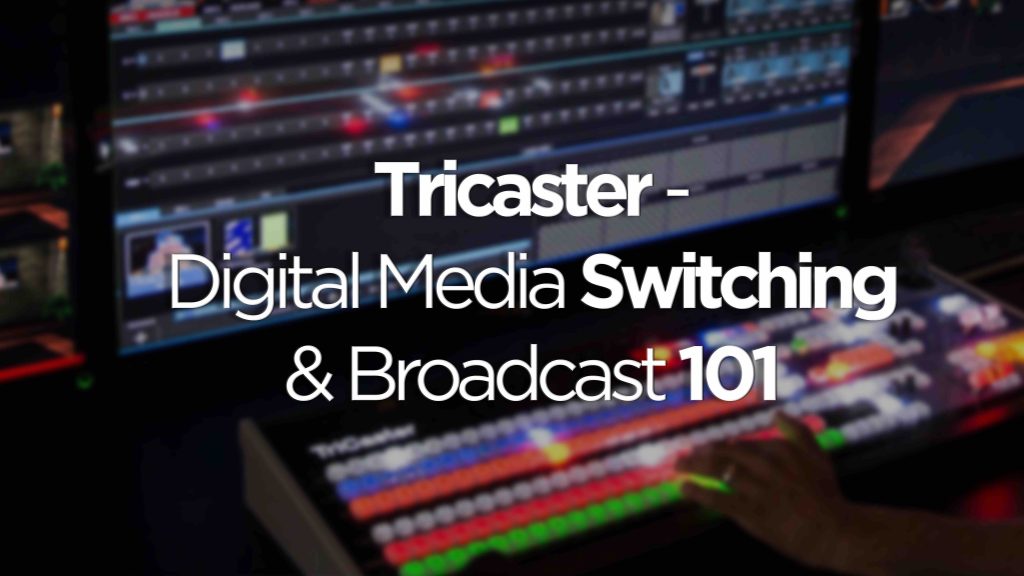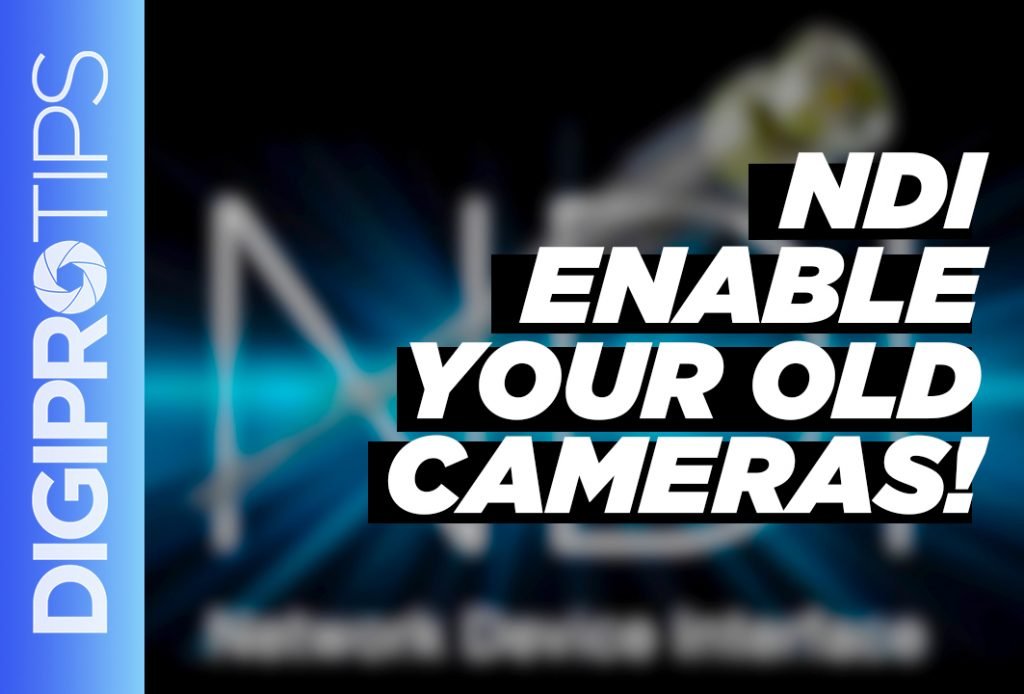Tricaster from Newtek makes live content production available to anyone.
Nowadays there are many more places that you can produce a ‘live broadcast’ than just TV. For us at DigiProTips this now includes social media platforms and gaming stream sites.
With platforms such as Facebook ‘Watch’, YouTube Live, Twitch, Instagram TV and Twitter’s Periscope, there are many different services with which you can set up a live broadcast that needs professional equipment to create high production quality content.
That doesn’t mean to say that Tricaster isn’t for TV either, the range of Tricaster caters for all kinds of broadcast services. You can start small and move all the way up to sports coverage with 16 camera inputs and active replay ability.
So what is a Tricaster?
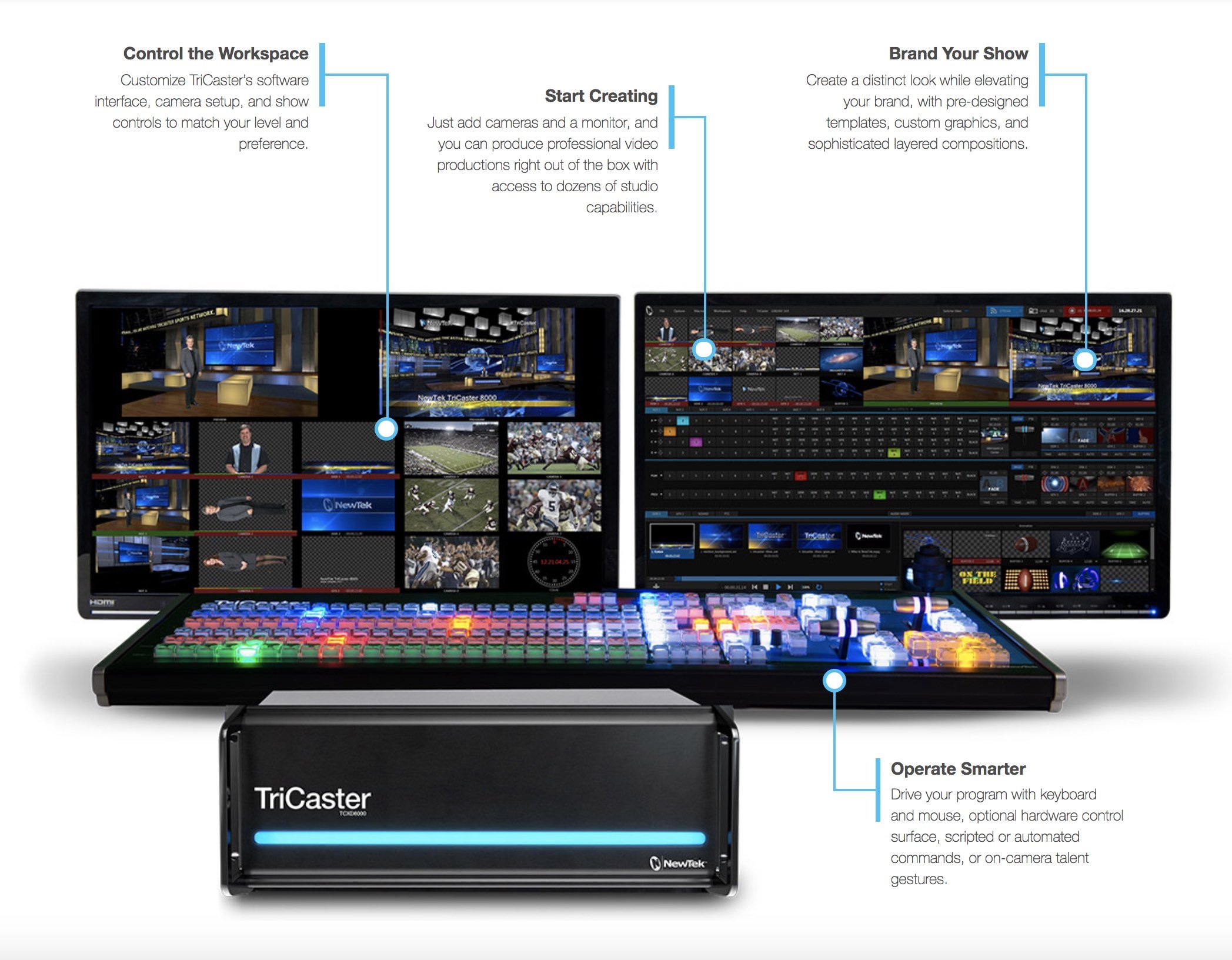
The name Tricaster is the brand name for a range of digital media switchers produced by hardware and software company NewTek.
Tricasters range with price and functionality but their main aim is to provide a complete and professional service with which to create live productions.
The systems work on suped-up Windows computers with multiple inputs for analogue and digital sources. These can then be mixed live with graphics, VT’s, stills and other live feeds.
What does it look like?
Your budget will largely determine what your Trciaster can do and what it looks like as the more expensive models have more inputs and take up more physical space. They range from the Tricaster Mini:

Through to the 4K capable TC1 Series:
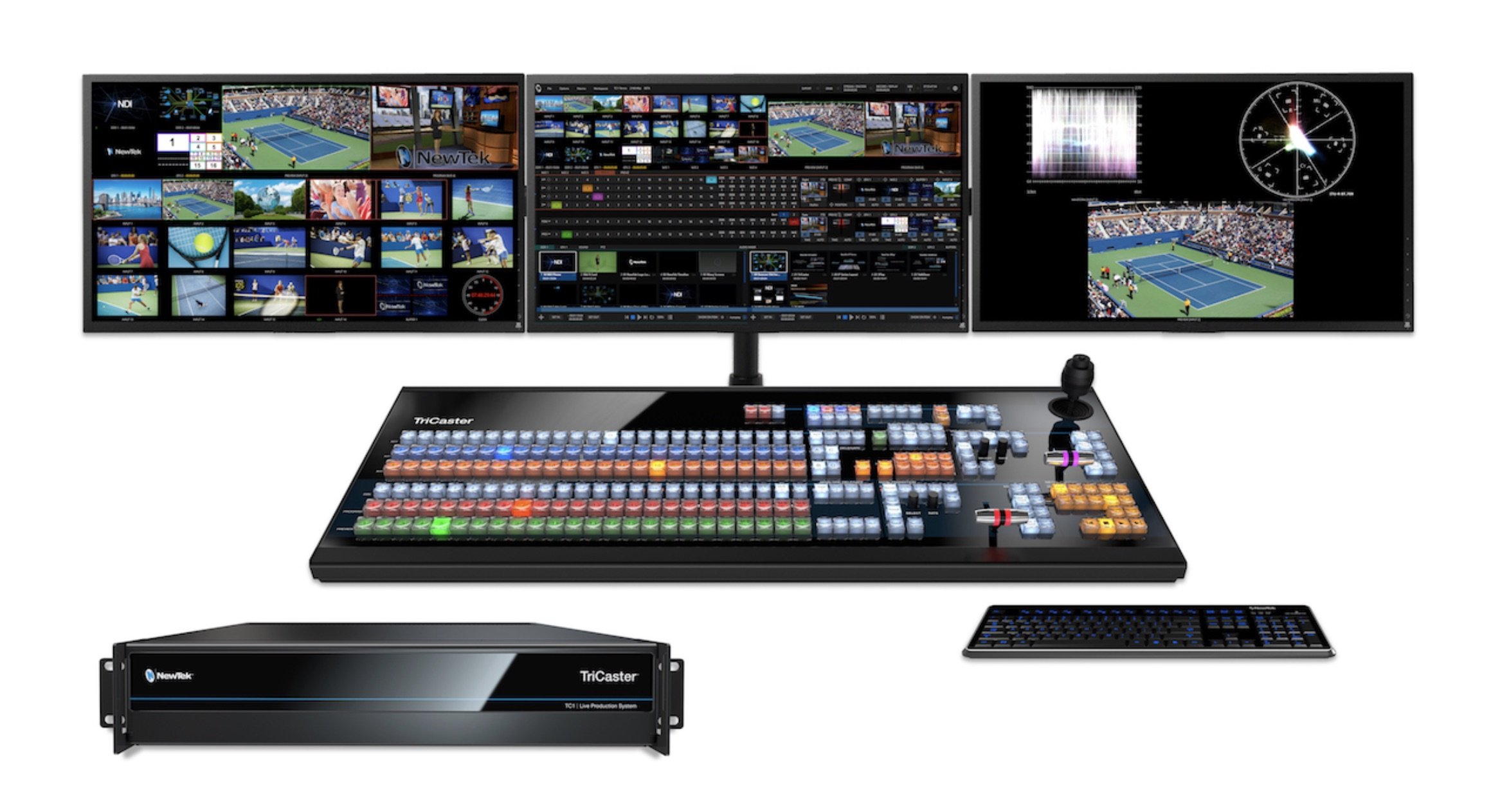
How does it work?
Let’s use the TC1 as a case in point. We use the Tricaster TC1 everyday for various forms of content creation and it is a real workhorse.
The unit has 4 physical SDI inputs and outputs, 4 audio 6.5mm jack left and right inputs and 3 multiview outputs for DVI, HDMI and Displayport. The system can then take another 12 IP or NDI sources. These could be anything from computer screens to remote pan, tilt and zoom cameras. In essence you have 16 inputs to play with. These are then all mixed live in the Tricaster interface.
There are two types of interface based on the Standard Edition of the Tricaster loaded onto your unit or you can upgrade to the Advanced Edition which gives you more mix effects, downstream keyers and other options not available in the Standard Edition.

Using the Tricaster operating software.
When you first start up the Tricaster software you will be asked to create a project. At this screen you will choose the resolution and frame rate of your project, this cannot be changed afterwards so it’s important to get it right first time. You should create a project based on the media coming in not where you are outputting to, as the Tricaster systems can scale accordingly on-the-fly.
The interface for Tricaster systems can be a little daunting at first but if you have any editing experience then this will quickly become familiar. You have your ‘Program Monitor’ on the top right of screen. This shows you what is being output live to your audience and any changes you make will be reflected here. To the left of that is the ‘Preview Monitor’ this can be used to cue up the next shot or VT if you like to cut using the transition effects. You then have all of your inputs available to see in thumbnail and below is your audio mixer, VT players known as ‘DDR’s’ and stills buffers.
The input you want to put out as ‘live’ is swapped to using any of the control surfaces that can be purchased to accompany the Tricaster units or via hotkeys on a standard computer keyboard.
What sets this apart from other services?
The beauty of Tricaster is that it is an all in one solution. Depending on your unit you can have more camera and virtual sources at your fingertips than many other providers can offer.
The interface is very intuitive and soon becomes second nature to use. The software offers framesync from any source and can delay both audio and video sources accordingly to match.
The latest products can take 4K sources and utilise the best in NDI technology, a proprietary system of delivery from Newtek themselves (we’ll cover this in more detail in another article as there is a lot to discuss).
You will be hard pushed to find the same functionality in a software-only route or for the same price compared with other products on the market.
However, we don’t deny there are other solutions, some of which we employ ourselves and will cover off another time.
For now, let’s just say if you’re looking producing live content, consider the Tricaster route.
Note. The NewTek TriCaster Mini Advanced HD-4 Switcher is available on Amazon for $7,000 (at time of writing). Usually you need to go through a reseller of NewTek to purchase, so this could be a significantly easier route of purchase if you are in the market for one.
Now that your Tricaster knowledge is up to speed and/or you have one in your setup, let’s look at how you can use your iPhone as an NDI enabled feed:
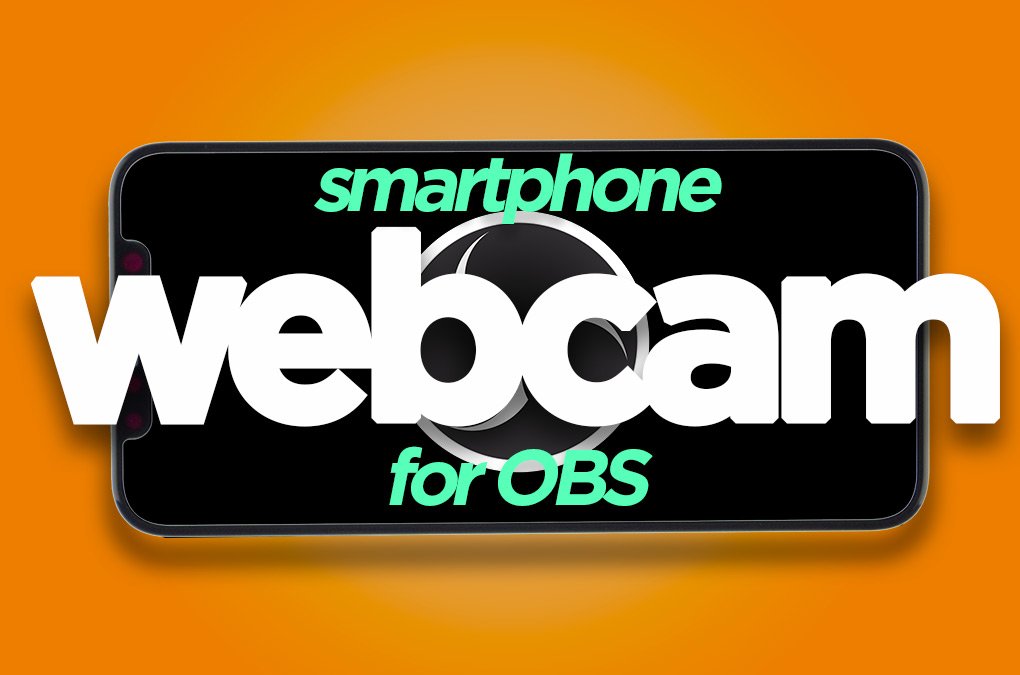
And how to send your computer or iOS screen over NDI too:
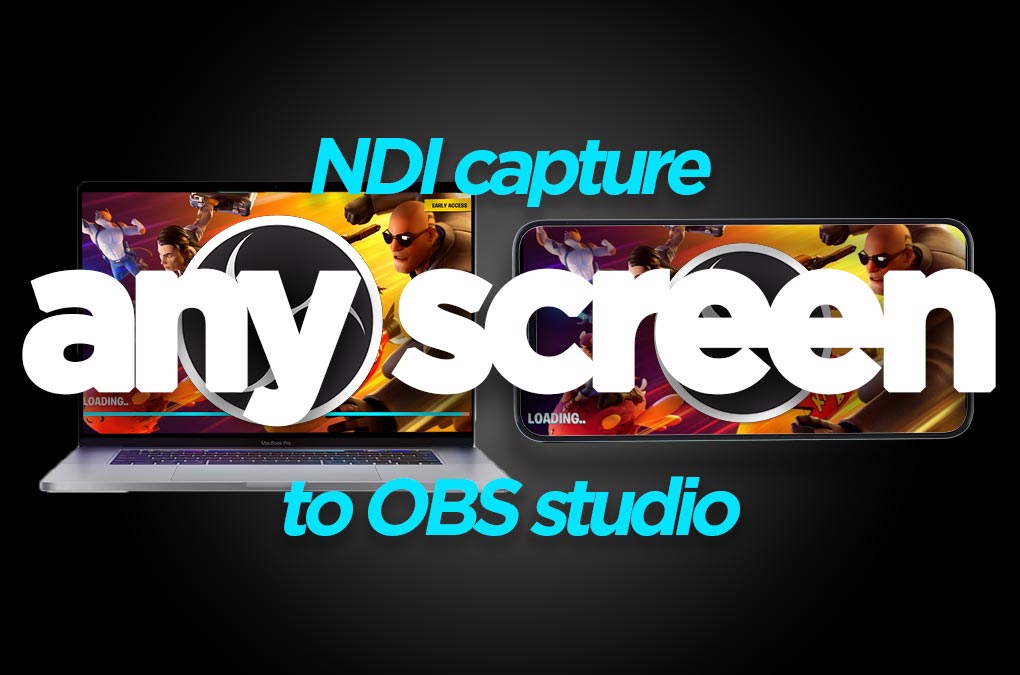
DigiProTips

